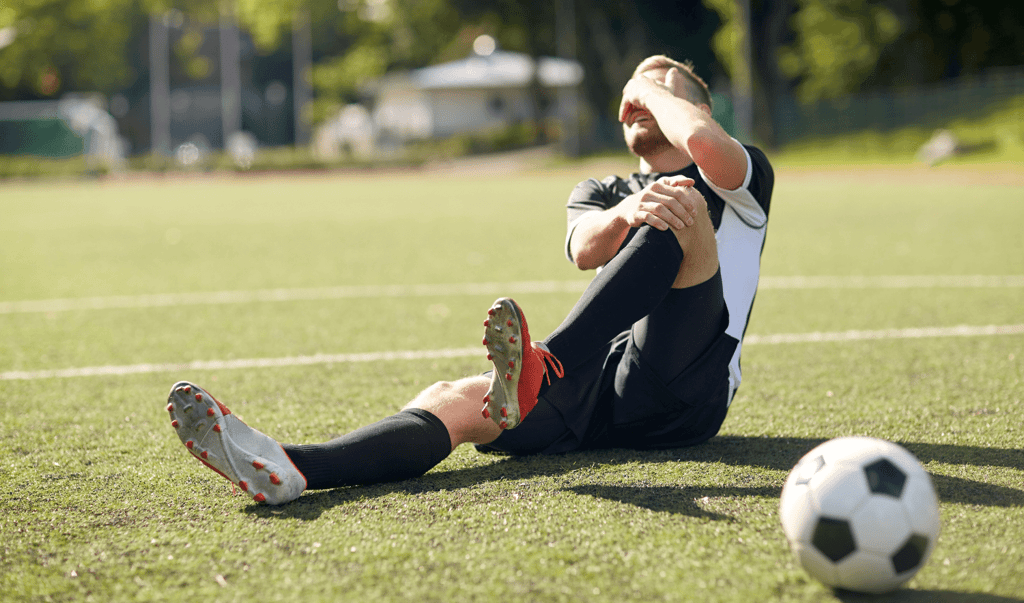ACL Tear
An anterior cruciate ligament (ACL) tear is one of the most common and serious knee injuries, particularly among athletes. Whether you're an athlete or someone leading an active lifestyle, understanding this injury can help you take preventive measures and seek timely treatment.
MSKSPORT
1/25/20252 min read


What is the ACL?
The ACL is one of the four main ligaments in the knee that connect the femur (thighbone) to the tibia (shinbone). This ligament plays a critical role in stabilizing the knee, particularly during activities that involve sudden stops, changes in direction, or jumping.
Causes of an ACL Tear
An ACL tear usually occurs during activities that stress the knee joint. Common causes include:
Sudden Direction Changes: Pivoting or cutting maneuvers during sports like basketball, soccer, or football.
Improper Landing: Landing awkwardly from a jump.
Direct Impact: A collision, such as a tackle in football, that forces the knee into an unnatural position.
Overextension: Hyperextending the knee during activities.
Symptoms of an ACL Tear
When the ACL is torn, you may experience:
A Popping Sound: Many people report hearing or feeling a "pop" in their knee at the moment of injury.
Severe Pain: Immediate pain that may prevent you from continuing activity.
Swelling: Rapid swelling within a few hours of the injury.
Instability: A feeling that the knee is "giving out" or cannot bear weight.
Limited Range of Motion: Difficulty fully bending or straightening the knee.
Diagnosis
If an ACL tear is suspected, consult a healthcare provider. Diagnosis typically involves:
Physical Examination: Tests like the Lachman test or pivot-shift test to check for knee stability.
Imaging: An MRI scan is commonly used to confirm the tear and assess damage to other structures in the knee.
Treatment Options
Treatment for an ACL tear depends on the severity of the injury and your activity level:
Non-Surgical Treatment:
Protect, Optimal Loading, Ice, Compression, Elevation (POLICE): To reduce swelling and pain.
Physical Therapy: Focused on strengthening surrounding muscles and restoring knee function.
Bracing: For added stability during rehabilitation.
Surgical Treatment:
ACL Reconstruction: Often recommended for athletes or active individuals. This procedure involves replacing the torn ligament with a graft from another tendon.
Post-Surgery Rehabilitation: A rigorous physical therapy program to regain strength and stability.
Recovery Timeline
Recovery from an ACL tear varies:
Non-Surgical Recovery: 2-6 months, depending on the severity and adherence to rehabilitation.
Post-Surgery Recovery: 6-12 months of rehabilitation before returning to high-impact activities.
Prevention Tips
While not all ACL tears are avoidable, you can reduce your risk by:
Strengthening Exercises: Focus on building strength in the hamstrings and quadriceps.
Improving Balance and Agility: Incorporate exercises that enhance neuromuscular control.
Proper Techniques: Learn safe landing and cutting techniques during sports.
Wearing Proper Gear: Use appropriate footwear and braces if needed.
Conclusion
An ACL tear is a significant injury, but with proper diagnosis, treatment, and rehabilitation, most individuals can return to their normal activities. If you suspect an ACL injury, seek medical attention promptly to begin the recovery process and minimize further damage.
Read more
Physiotherapy in Bali
Your Path to Optimal Health.
Contact us
Subscribe us
© 2024. PT BUMI MEDIKA BALI. All rights reserved.
